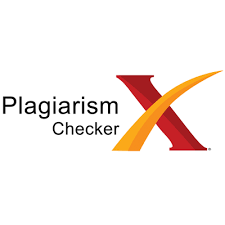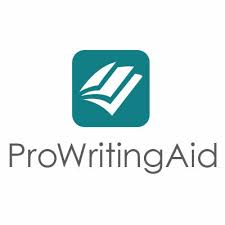INTEGRATING MATHEMATICS LOCAL WISDOM BASED THROUGH WORKSHEET IN BILINGUAL PROGRAM
DOI:
https://doi.org/10.30740/jee.v3i2p46-52Keywords:
Bilingual, Banten Culture, Local Wisdom, Mathematics, WorksheetAbstract
Elementary school mathematics learning is generally taught classically by teachers. By using the lecturing method and the material is also general nationally. There is no regional element (local wisdom values) there is no technological element. In this study, researchers discussed the integration of local wisdom-based mathematics learning through the development of student worksheets with Banten culture in the bilingual program at the SDIT Assa'adah Global Islamic School (AGIS) Elementary School, Serang City. The aimed of this research is to introduce Banten regional culture to elementary school students in a bilingual program with Indonesian and English trough mathematic worksheet. Researchers also simultaneously introduce foreign languages that are commonly used. This study used Research and development in the ADDIE (Analysis, Design, Development, Implementation, and Evaluation) method. the population of research are IT AGIS Elementary School students, and the sample is grade 4 SD IT AGIS. In this study, researchers drafted a grade 4 bilingual mathematics worksheet. The results were validated by 3 experts recommended worthy of being tested on students.
References
R. D. Purwanti, D. D. Pratiwi, and A. Rinaldi, “Pengaruh Pembelajaran Berbantuan GeoGebra Terhadap Pemahaman Konsep Matematis ditinjau dari Gaya Kognitif,†Al-Jabar J. Pendidik. Mat., vol. 7, no. 1, pp. 115–122, 2016.
B. S. Anggoro, “Pengembangan Modul Matematika Dengan Strategi Problem Solving untuk Mengukur Tingkat Kemampuan Berpikir Kreatif Matematis Siswa,†Al-Jabar J. Pendidik. Mat., vol. 6, no. 2, pp. 121–129, 2015.
H. Hasbullah, Y. Wiratomo, and E. Yuni Rahmawati, “Pengembangan LKS Pemecahan Masalah Matematika Bilingual Berdasarkan Strategi Metakognitif untuk SMP Kelas VII,†JTAM | J. Teor. dan Apl. Mat., vol. 2, no. 1, p. 31, 2018.
D. P. & K. Hernawati, “Pengembangan Lembar Kerja Siswa Materi Garis dan Sudut dengan Pendekatan Inquiry Berbantuan Software Wingeom,†Semin. Nas. Mat. dan Pendidik. Mat., vol. 1, 2015.
Y. Zuraidah and M. Enim, “MATEMATIKA BERBAHASA INGGRIS MENGGUNAKAN LEMBAR KERJA SISWA BILINGUAL DI SEKOLAH MENENGAH ATAS NEGERI 1.â€
A. Sandiyanti and R. Rakhmawati M, “Pengembangan Modul Bilingual Bergambar Berbasis Quantum Learning pada Materi Peluang,†Desimal J. Mat., vol. 1, no. 2, p. 157, 2018.
N. S. Astuti, “Pengembangan lembar kerja siswa (lks) pada mata pelajaran matematika siswa kelas x sma,†vol. 1, no. 2, pp. 13–24, 2017.
A. Majid, Perencanaan Pembelajaran. Bandung: PT Remaja Rosdakarya, 2006.
Triyanto, Model Pembelajaran Terpadu: Konsep, Strategi, dan Implementasi Kurikulum Satuan Pendidikan (KTSP). Jakarta: Bumi Aksara, 2015.
A. Ulfah and S. Trianingsih, “Keefektifan lembar kerja siswa tematik berbasis local wisdom terhadap karakter kerja sama siswa kelas 1 SD,†Prem. Educ. J. Pendidik. Dasar dan Pembelajaran, vol. 8, no. 2, p. 161, 2018.
S. Wahyuni, “Developing Science Learning Instruments Based on Local Wisdom To Improve Student’S Critical Thinking Skills,†J. Pendidik. Fis. Indones., vol. 11, no. 2, pp. 156–161, 2015.
R. D. Fannie and Rohati, “Pengembangan Lembar Kerja Siswa Berbasis POE,†Sainmatika, vol. 8, no. 1, pp. 99–105, 2014.
S. Günaydin and A. Karamete, “Material development to raise awareness of using smart boards: An example design and development research,†Eur. J. Contemp. Educ., vol. 15, no. 1, pp. 114–122, 2016.
N. Aldoobie, “ADDIE Model,†Am. Int. J. Contemp. Res., vol. 5, no. 6, pp. 68–75, 2015.
Sugiyono, Metode Penelitian dan Pengembangan. Bandung: Alfabeta, 2015.
Y. R. D. Veny Wuryaningrum, Nurmasari Sartono, “Pengembangan Lembar Kerja









